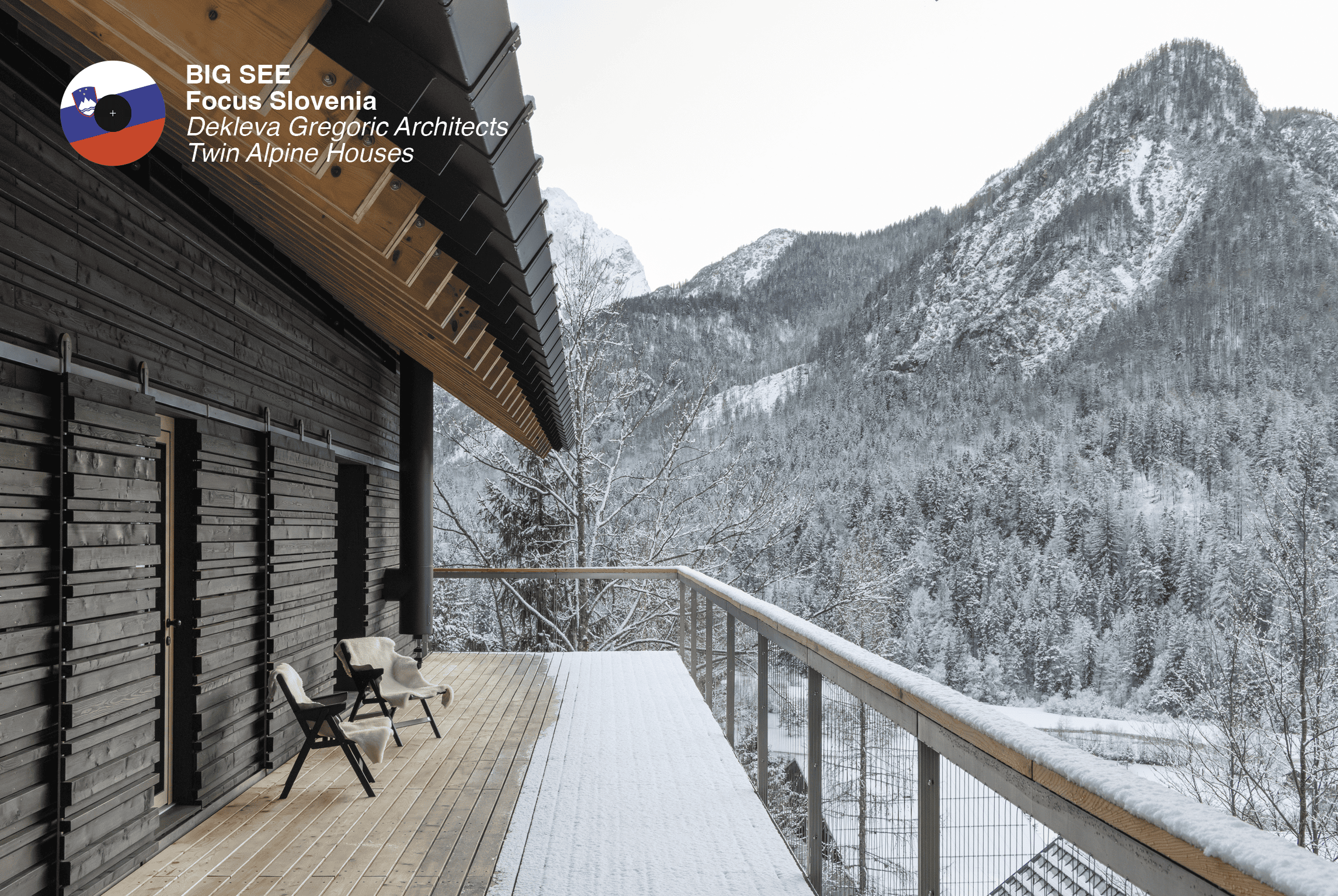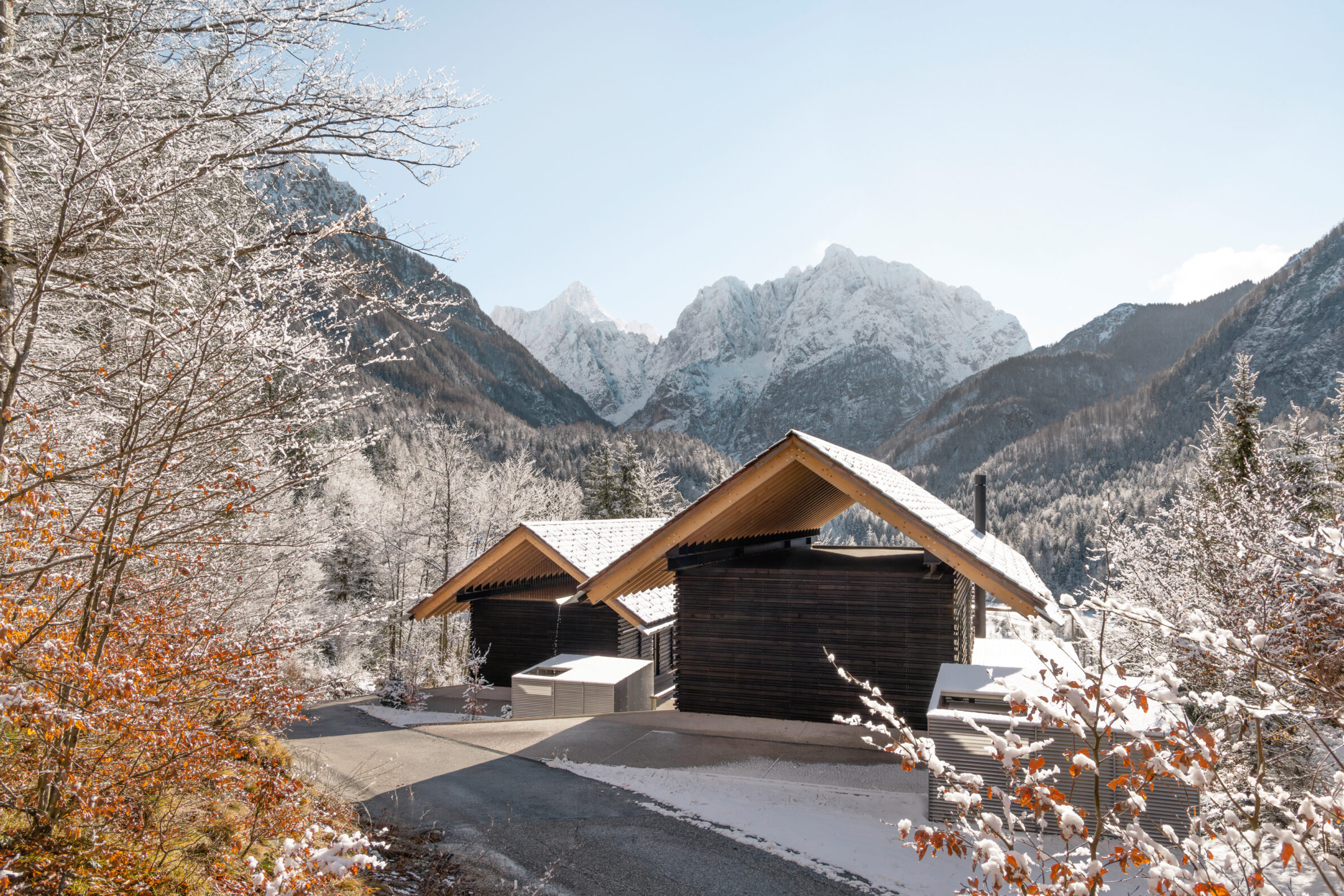
3 Questions for Gregoric Dekleva Architects
Local mastery, carpenters, shingle makers, metalworkers, translate construction into lived atmosphere.
Q: What role did craftsmanship play in shaping the atmosphere and experience of these houses?
A: The floating double-pitched roof in raw split larch shingles, the precisely exposed double rafter geometry, and the custom snow-guard grid create a sheltered, tactile “wooden canopy” above the main volume. The beech-dowel DLT structure, assembled from local spruce without adhesives is a manifestation of monomateriality; its rhythm and grain become the interior’s character. Board-formed concrete downstairs records the timber shuttering like a negative relief, linking both levels materially. On the façades, cross-jointed larch planks in varied widths soften corners and let the volume sit gently in the forest. In short, local mastery, carpenters, shingle makers, metalworkers, translate construction into lived atmosphere.
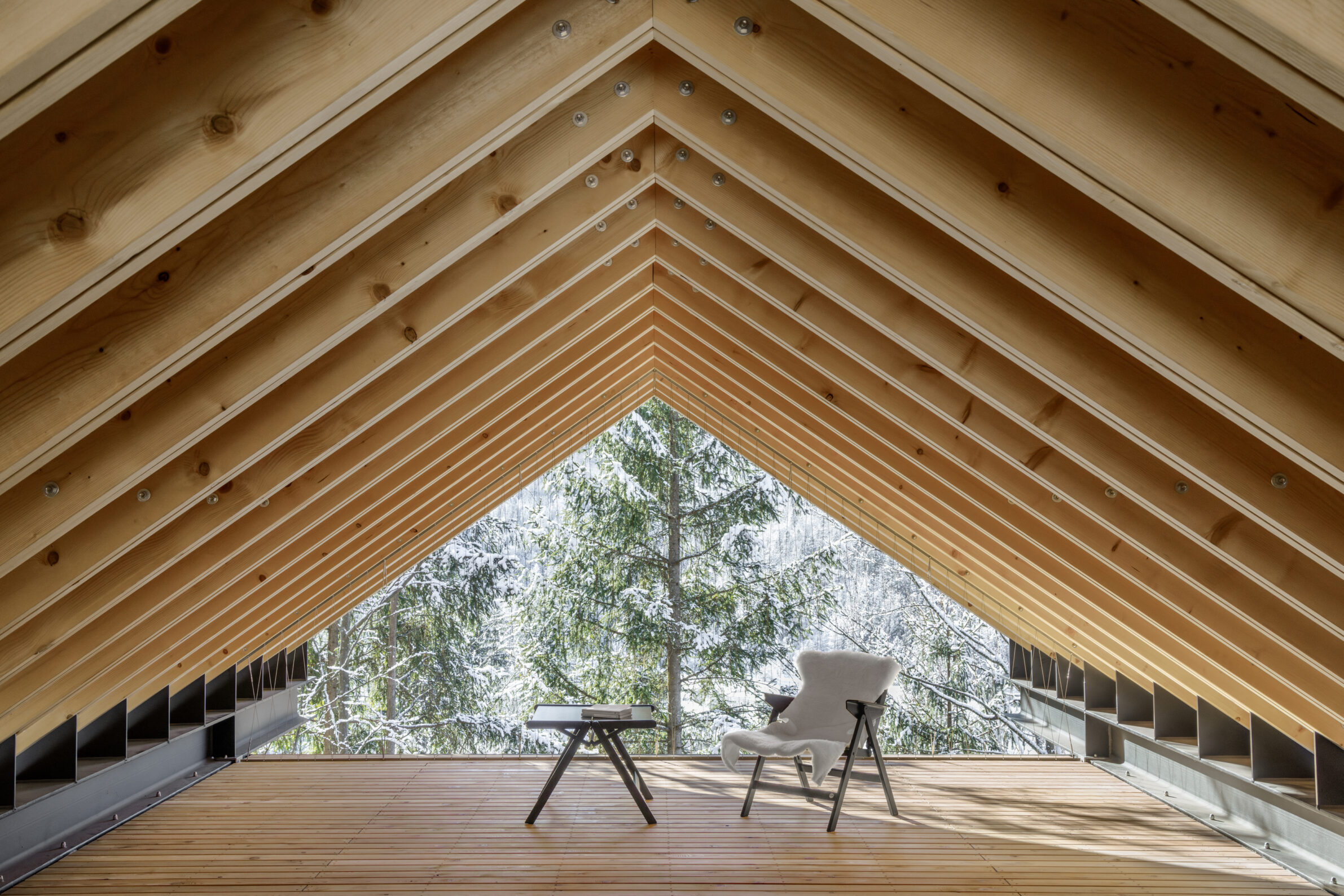
Q: How do you see the role of architecture in fragile natural environments such as the edge of a national park?
A: The architecture must be contextual, precise, and reversible. We work with the existing settlement culture, tradition and topography, an elongated volume set transversely on steep ground, so earthworks are limited and views are shared, not monopolized. A dark, timber envelope and forest tree trunks let the houses visually recede. We separate a durable, partially embedded concrete base from a lighter timber ground floor level, reducing material where possible and choosing reversible wooden systems like DLT. The goal is to complete the place rather than dominate it: building less, building better, and leaving the landscape legible.
The architecture must be contextual, precise, and reversible.
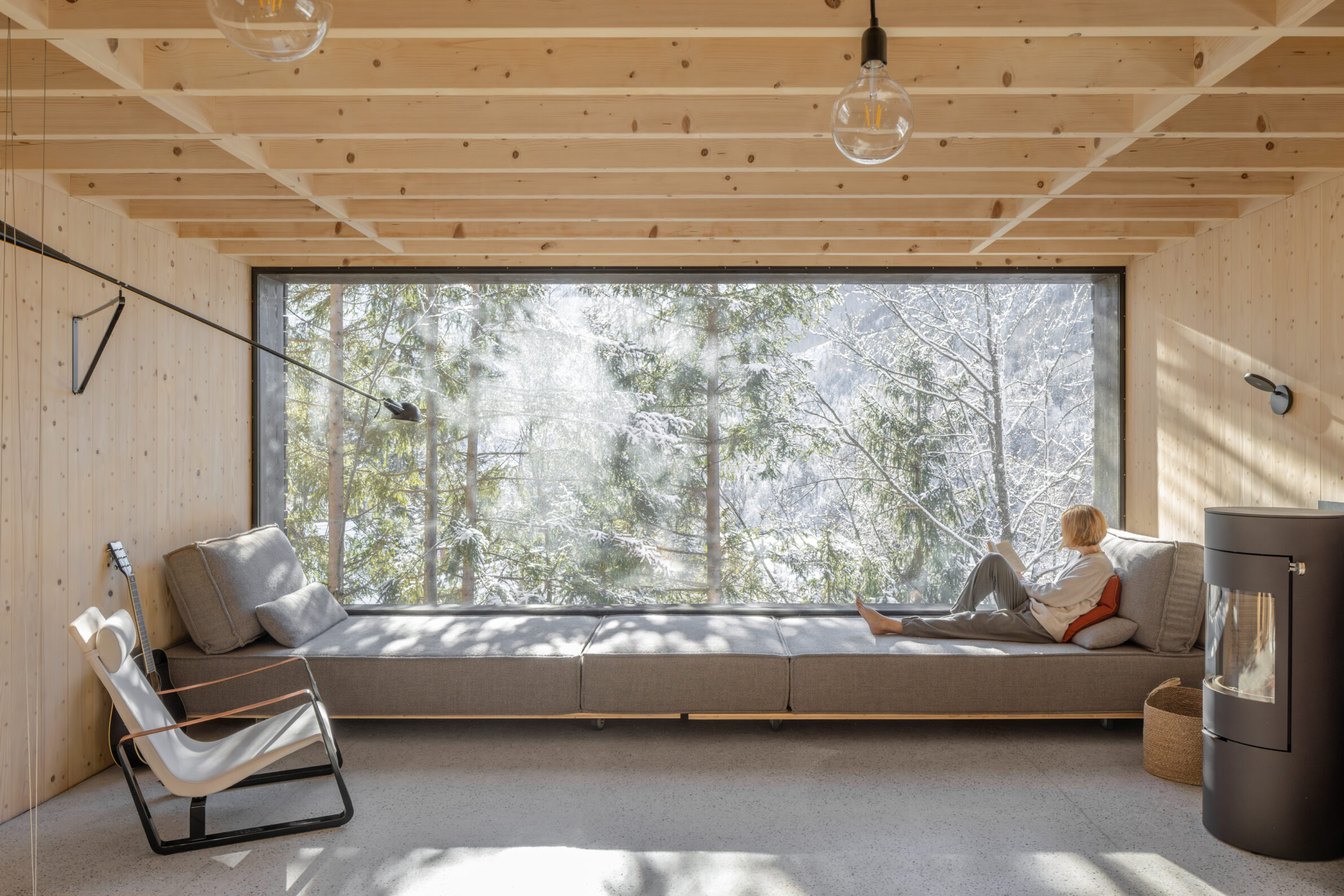
Q: What values do you hope your architecture communicates to both its immediate users and to the broader community?
Continuity and contemporaneity: a clear dialogue between Alpine tradition and present-day living. Care for resources and craft: local wood, long-life details, and construction that expresses how it’s made. Hospitality and togetherness: flexible interiors, like the wide, reconfigurable sofa-beds at the panoramic window, invite shared use and quiet retreat. Civic responsibility: a model that could guide future renewal of Alpine settlements without erasing memory. Ultimately, we hope the houses read as precise, calm structures that belong to their place and time.
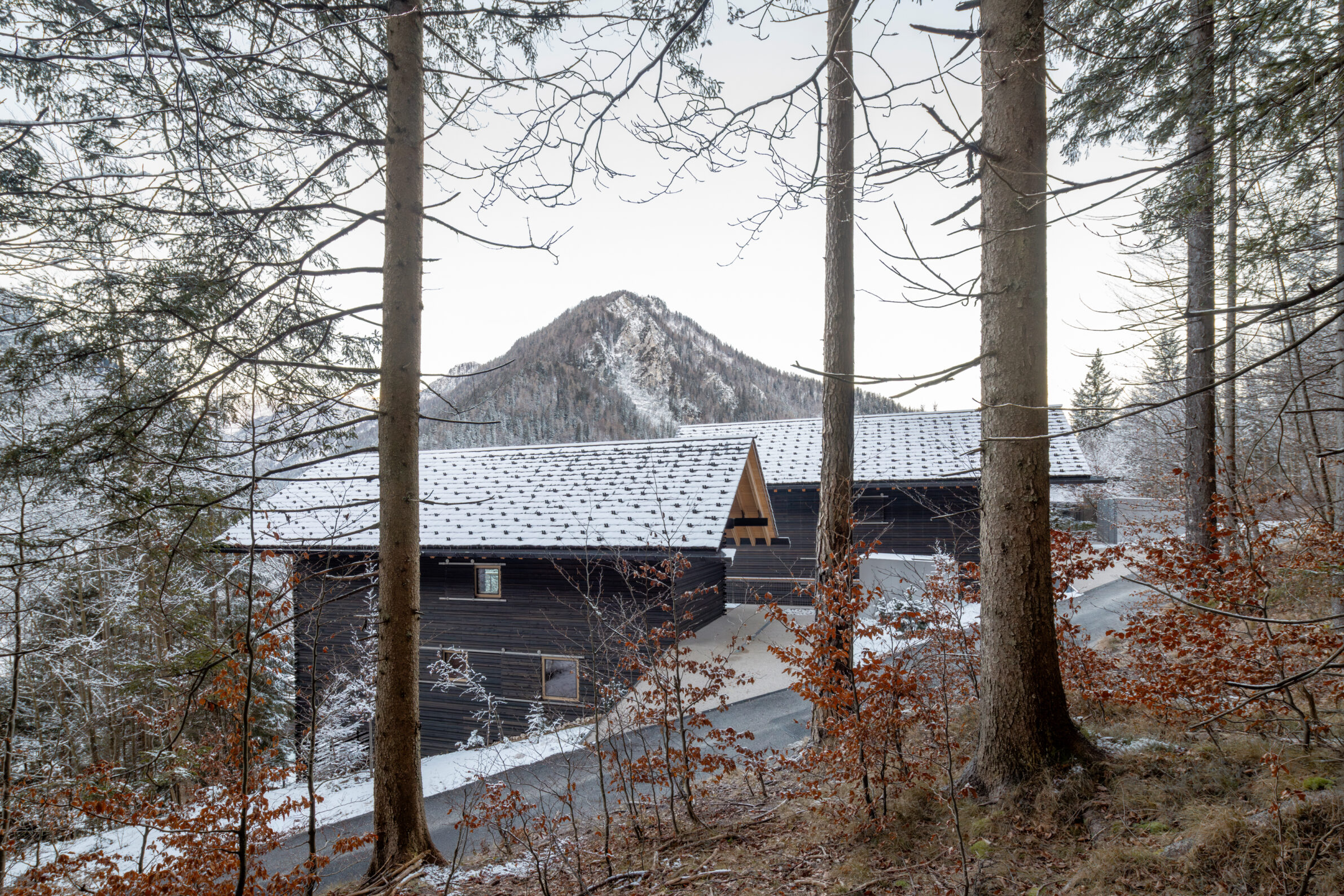
About Twin Alpine Houses
The contemporary holiday houses, situated at the foot of Slovenia’s most majestic mountains, subtly intertwine tradition, innovation, nature, and architecture. Their concept responds on multiple levels to the rich Alpine architectural heritage and the challenges of their unique location on the edge of Triglav National Park, at the tripoint where the Alps have historically connected the cultures of Slovenia, Italy, and Austria for centuries. Nestled at the forest’s edge above Lake Jasna, they redefine the model of living on steep terrain. Through a contemporary interpretation of Alpine wooden construction, they emphasise the necessity of a thoughtful and subtle building culture in the European mountain landscape.
Architectural References and Context
The harmonious placement of both houses was based on a precise understanding of their unique location, with views of the Julian Alps and Lake Jasna, and adaptation to the varied terrain. They complement the silhouette of the existing holiday home settlement between the forest edge and the lake. The architectural design draws inspiration from traditional wooden Alpine houses and several high-quality pre-existing holiday buildings in the settlement, reflected in the balanced proportions of the volumes and the dark wooden façade. A multilayered architectural reference is present in Plečnik’s hunting lodge near Kamniška Bistrica from 1934, significantly enriching the architectural Alpine heritage with its distinct design language. Its elongated volume, featuring a substantial stone base and a dark wooden upper floor, is topped by a striking architectural element—a floating roof with an exposed wooden structure, emphasised eaves, and overhanging gutters.
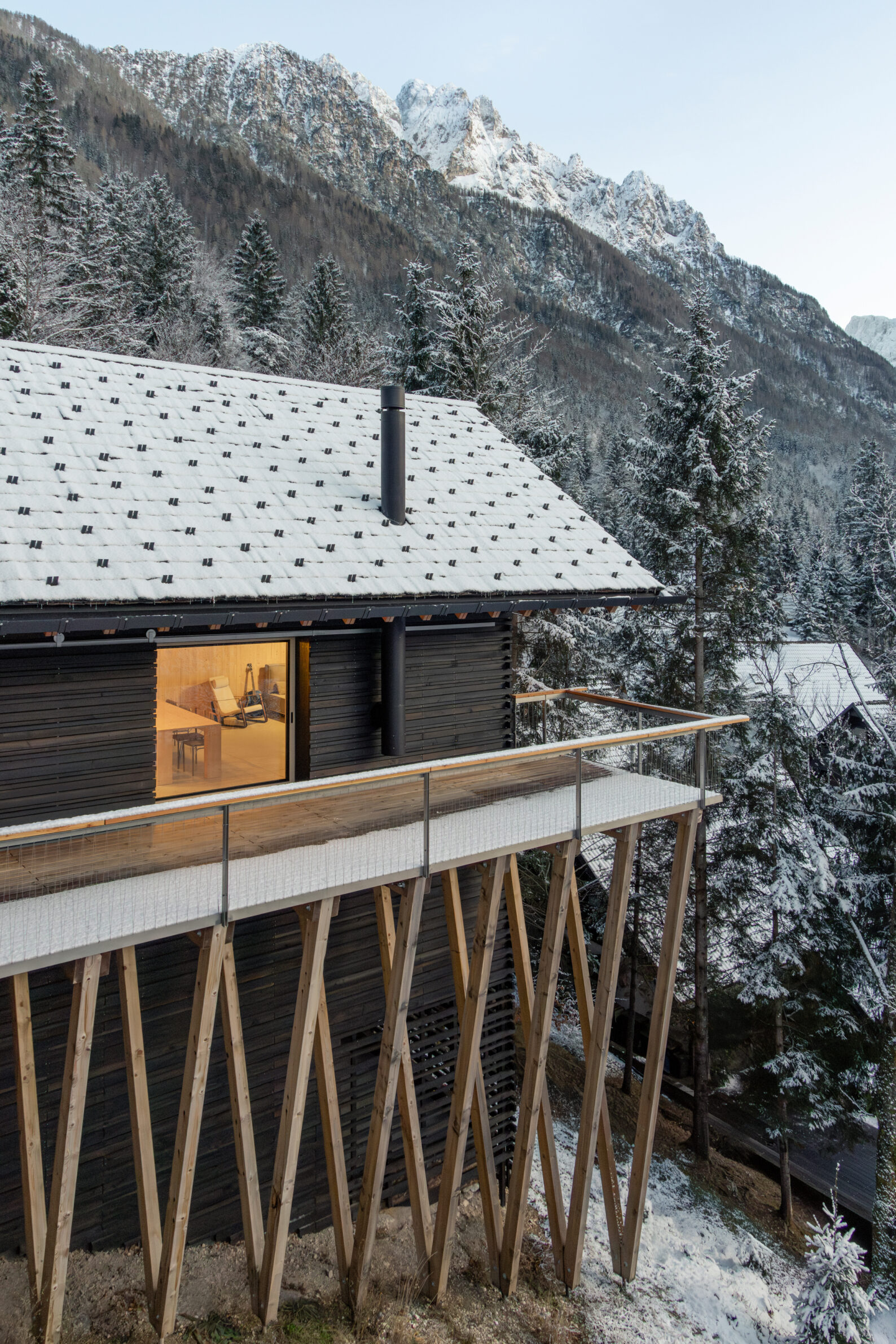
Spatial and Material Concept
The Alpine house’s architectural concept highlights a simple, elongated volume wrapped in dark wood positioned transversely on the steep terrain. The volume is complemented by two distinctive wooden structures in the shape of a V—one as an iconic gabled roof and the other as a supporting framework for the elevated terrace, which gradually opens up through a rhythmically repeated iteration of V-shaped columns.
The floating double-pitched roof with pronounced overhang is not merely a striking visual element extending into the landscape; it enhances the base volume by creating a contemplative wooden shelter. This surprising primary outdoor space offers an intense experience of the massive wooden roof structure, composed of double rafters, while providing shelter and shade in the summer months. The roofing material continues the tradition of raw split larch shingles, interwoven with a precise grid of custom-made metal snow guards. Thus, the floating roof becomes the key identity of the Twing Alpine houses.
The lateral wooden terrace acts as a pier—a viewing platform—overlooking the lake. Additionally, it serves as an entrance forecourt and an outdoor living space, seamlessly connecting the interior with the surrounding environment to create a harmonious experience.
The dark-oiled wooden façade wrapping the primary volume reflects the historical colour scheme and materiality of the original wooden houses in this area and the broader Alpine heritage. The longitudinal aspect of the volume is further emphasised by a refined horizontal arrangement of larch planks in four slightly different dimensions. At the corners, their cross-jointed arrangement softens the transition between solid and void, between house and landscape. Through its thoughtful placement on the steep terrain, materiality, and colour palette, the houses blend seamlessly with the backdrop of the mixed Alpine forest while completing the existing holiday home settlement.
The primary volume is structurally and materially divided into two parts. The lower, partially embedded concrete level is cantilevered into the terrain. In contrast, the upper wooden level rests upon it, highlighting an ecological commitment through an innovative patented structure made from solid Dowel Laminated Timber assembled from local alpine spruce wood. The advantage of DLT lies in its avoidance of environmentally harmful adhesives that are typical of conventional Cross Laminated Timber. The materiality of the main structure holistically defines each level’s atmosphere: exposed concrete with the imprinted texture of wooden formwork encapsulates the sleeping area, while visible, geometrically precise beech dowels enhance the texture of the wooden enclosure of the living space. These create a unique tension with the natural knots of the spruce boards. A series of narrow and relatively high solid crossbeams softens the massiveness of the wooden ceiling panel and enhances the sense of depth within the ceiling. A panoramic window on the shorter side of the volume brings the ever-changing natural surroundings into the heart of the wooden living space, making nature the most striking element of the interior.
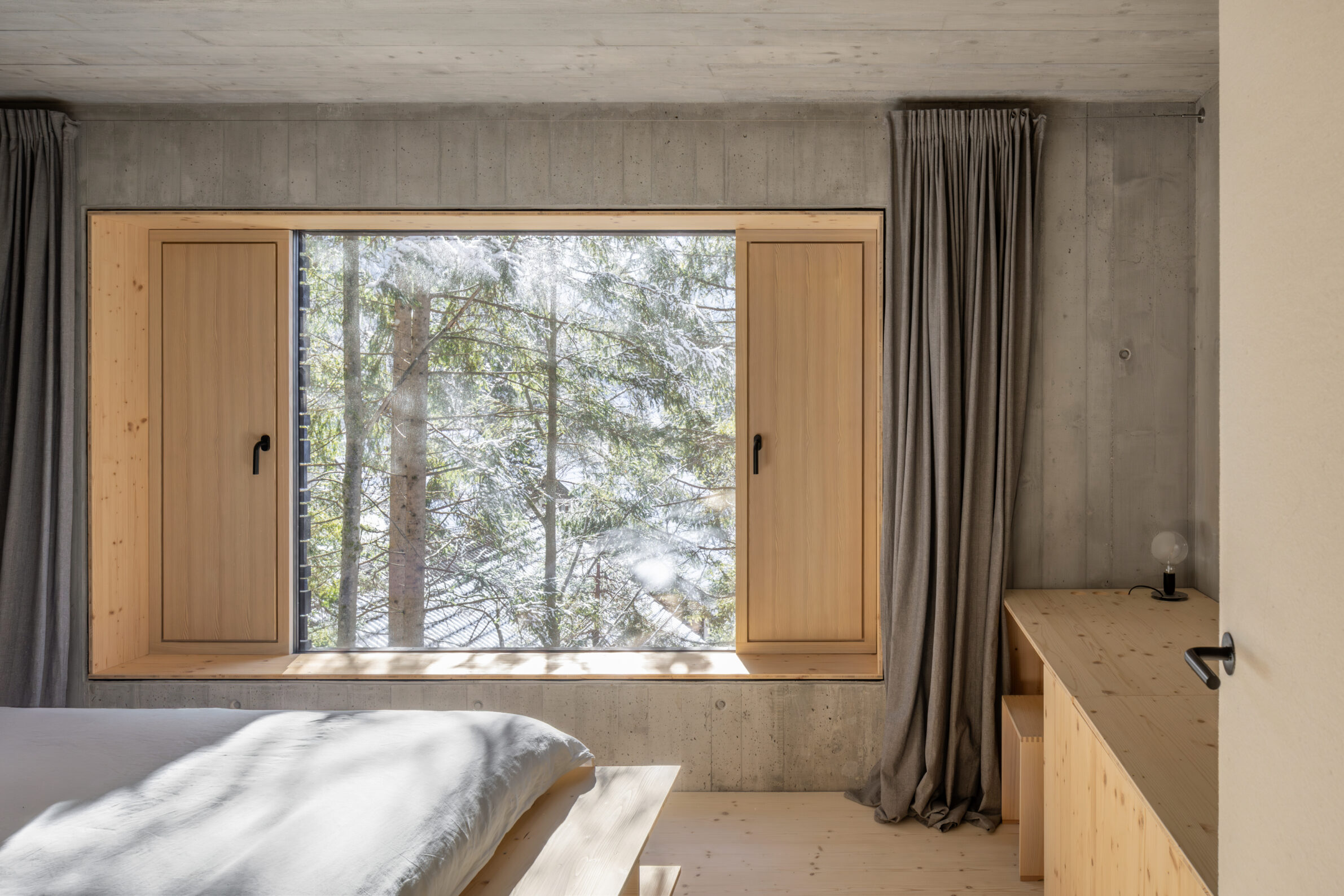
Alpine Philosophy of Hospitality
The relaxation houses embrace the traditional Alpine philosophy of hospitality, whereby guests are not sent away before nightfall but are instead offered a place to stay. The interior furnishings are designed to accommodate as many guests as possible. Even the custom-designed large sofa, which spans the entire width of the living space beneath the panoramic window, consists of two large interconnected beds on wheels that can be arranged in any desired configuration. The positioning and design of the sofa, situated right against the glass, create a unique experience of residing among the treetops, causing the panoramic window to seem to disappear, functioning as a transparent wall.
Alpine Houses as a Holistic Vision for the Future of Alpine Settlements
This project is not merely an architectural intervention but a vision for re-establishing a modern Alpine identity for buildings on the edge of Triglav National Park. Its distinctive design and carefully selected materials could serve as a model for the future visual, cultural, and material renovation of Alpine settlements. At the same time, it raises awareness of the significance of preserving Alpine architectural heritage in a sustainable and contemporary manner.
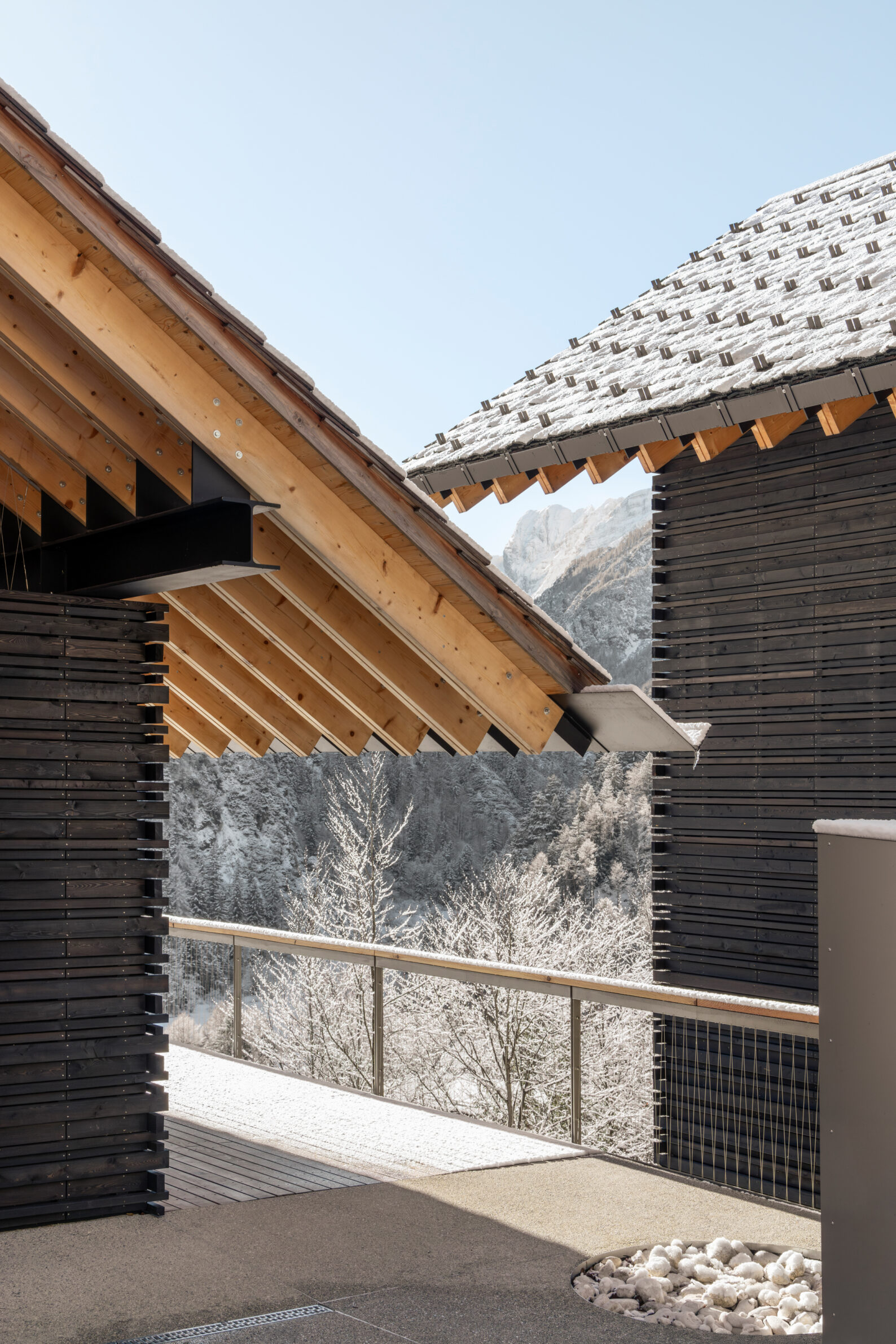
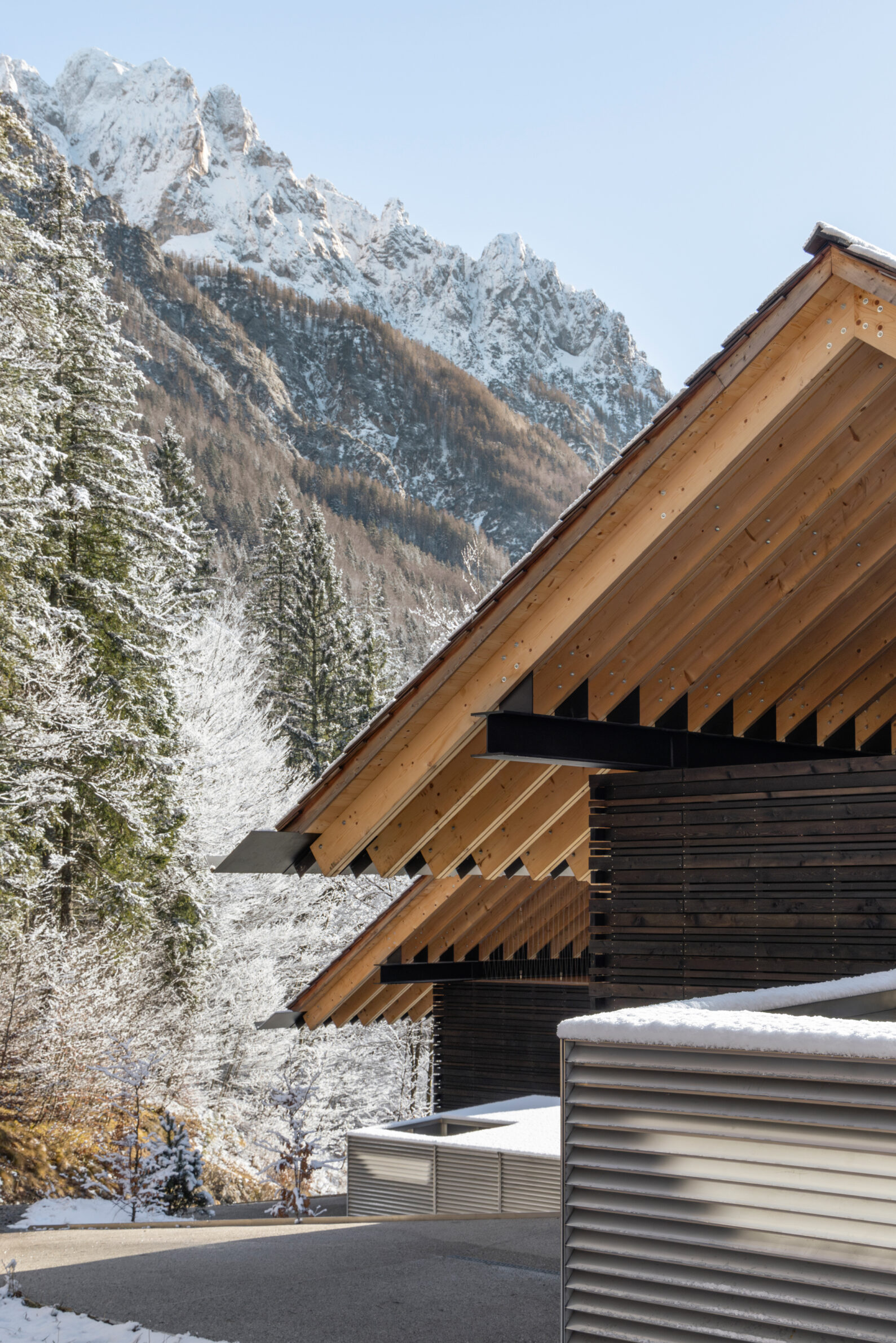
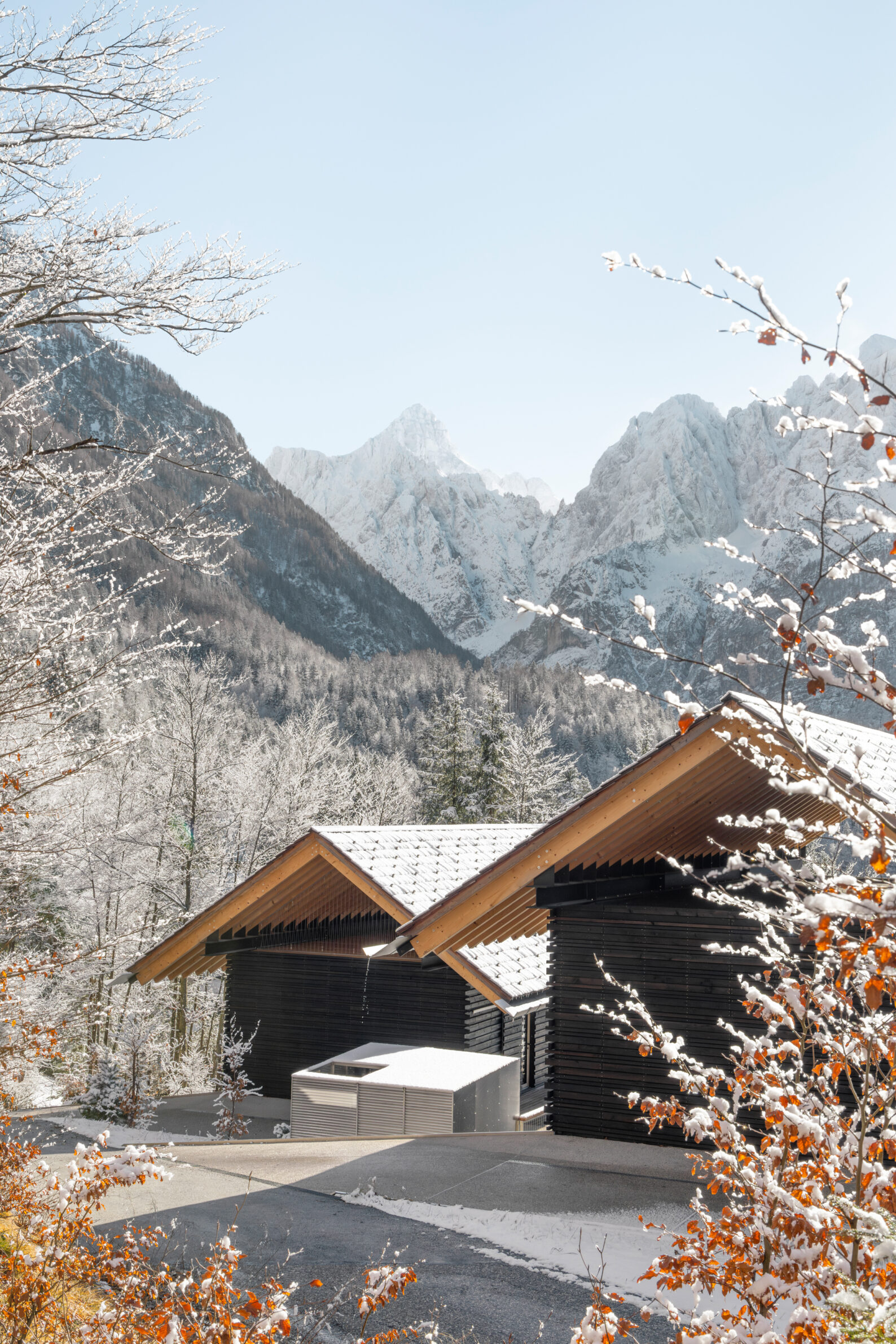
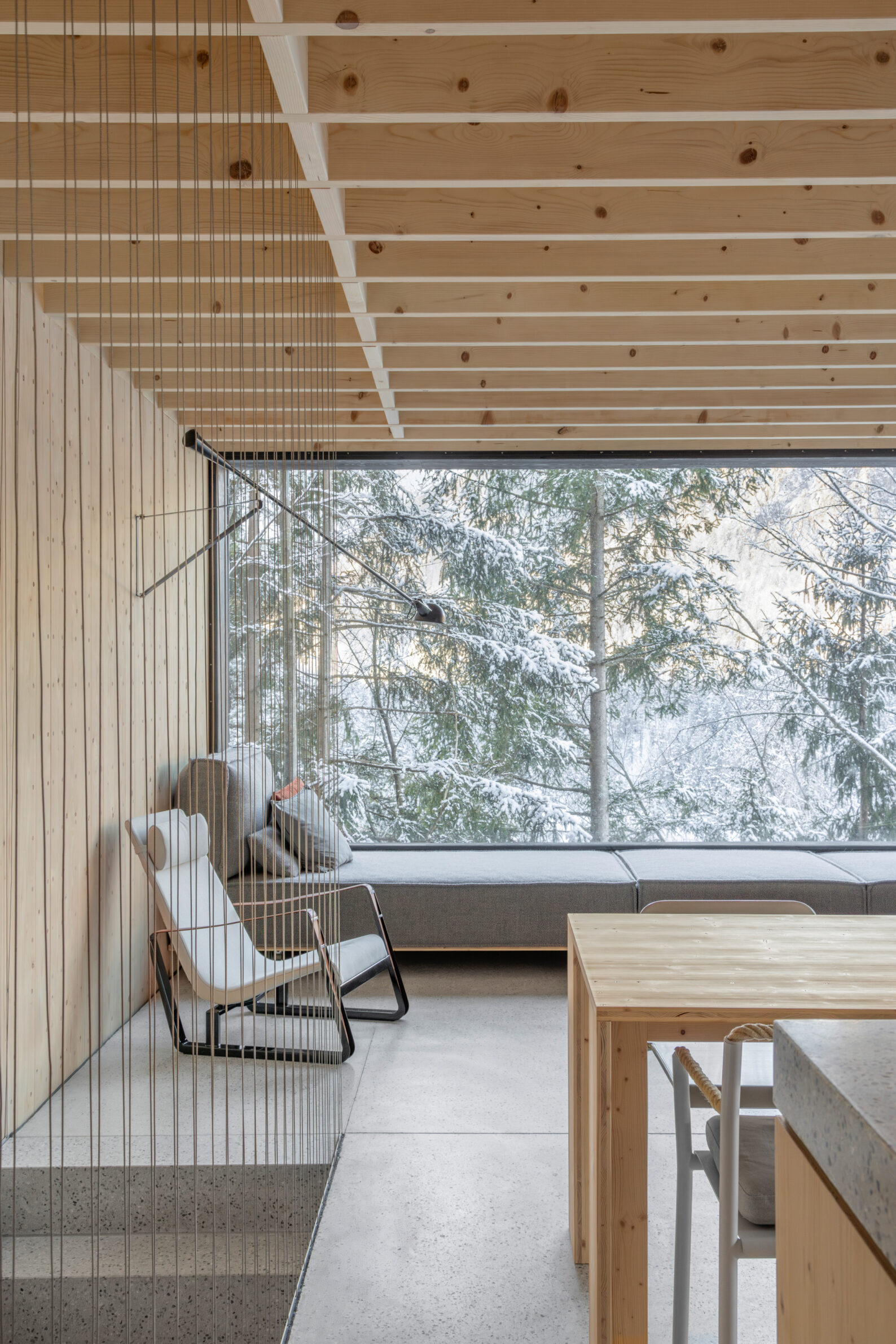
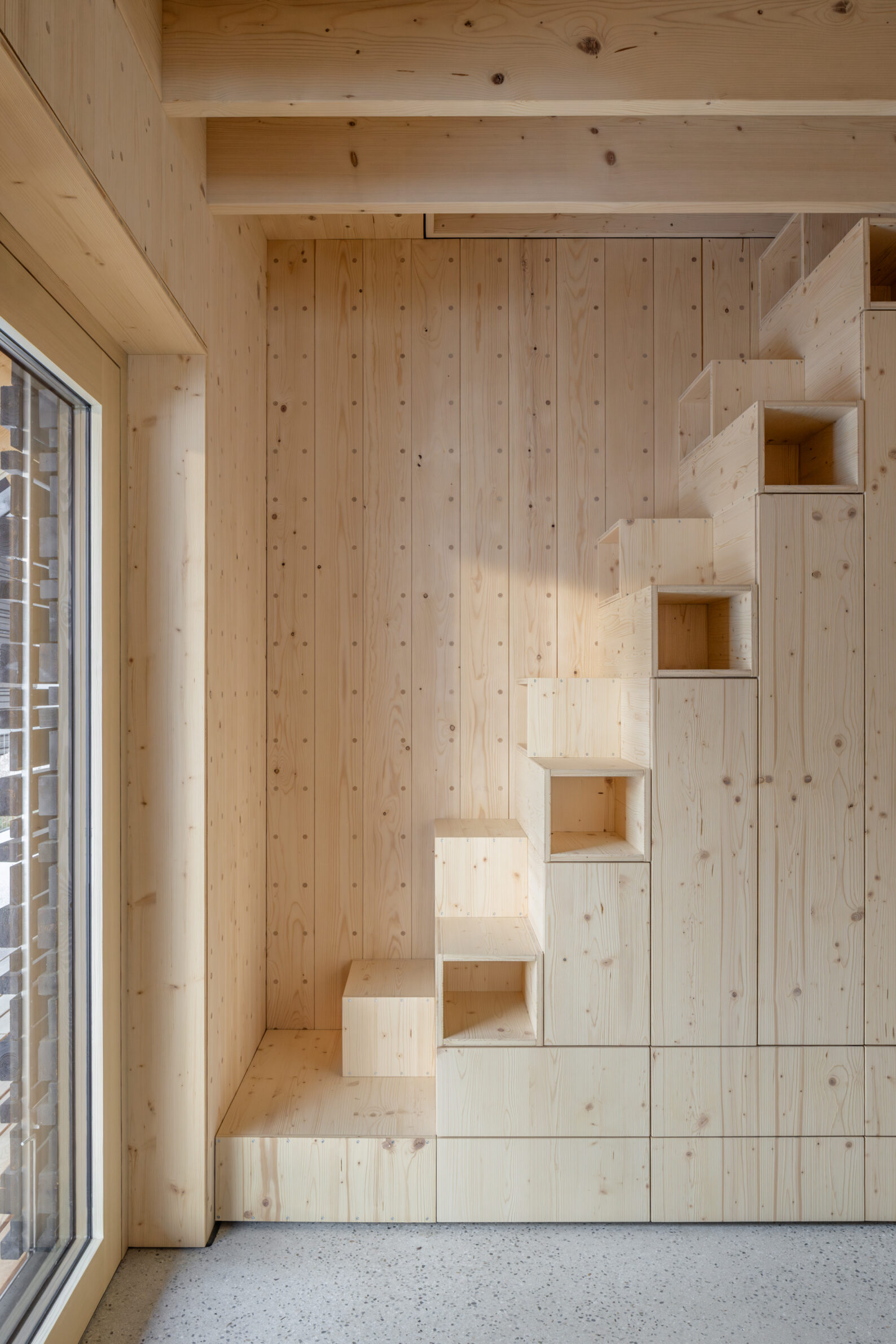
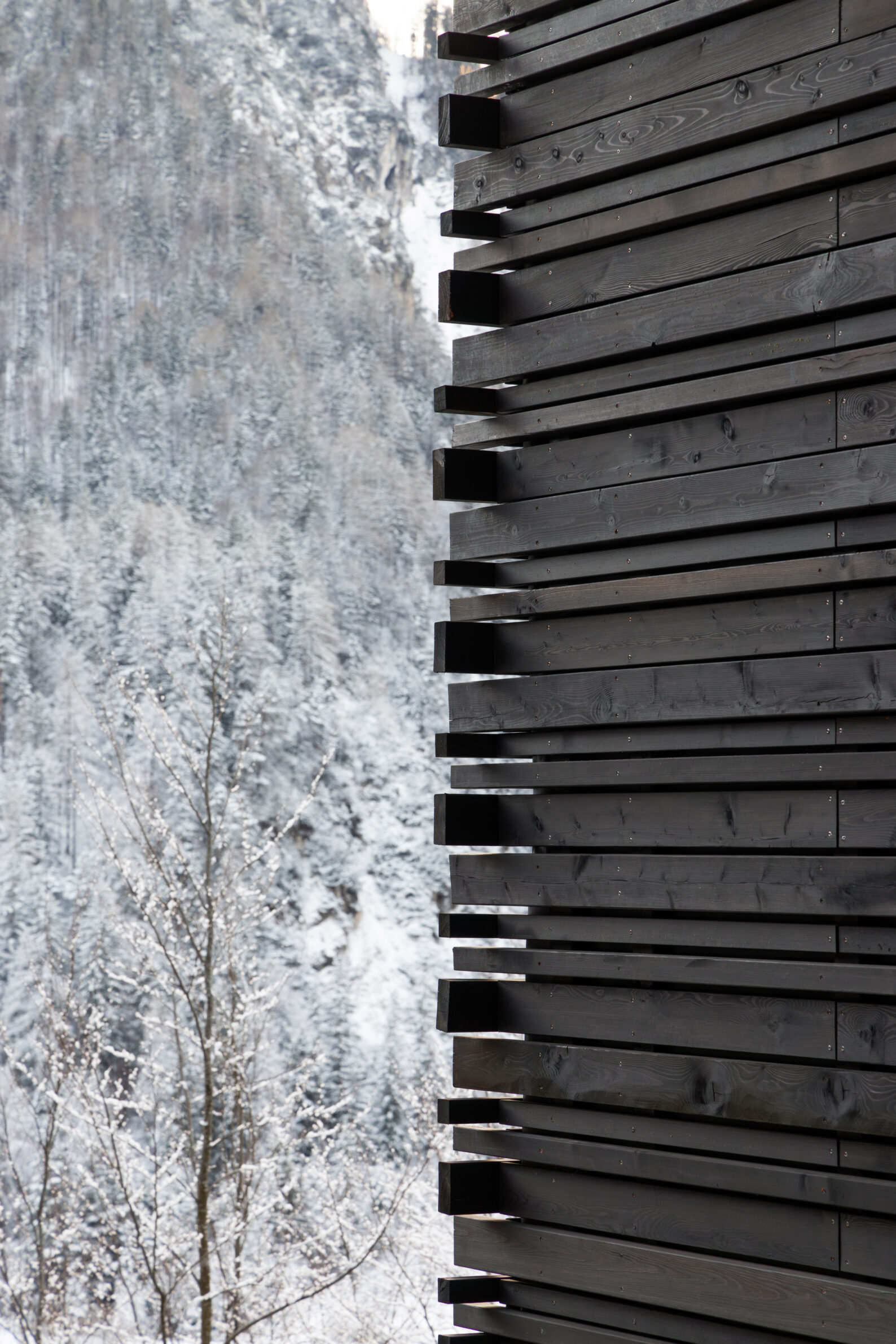
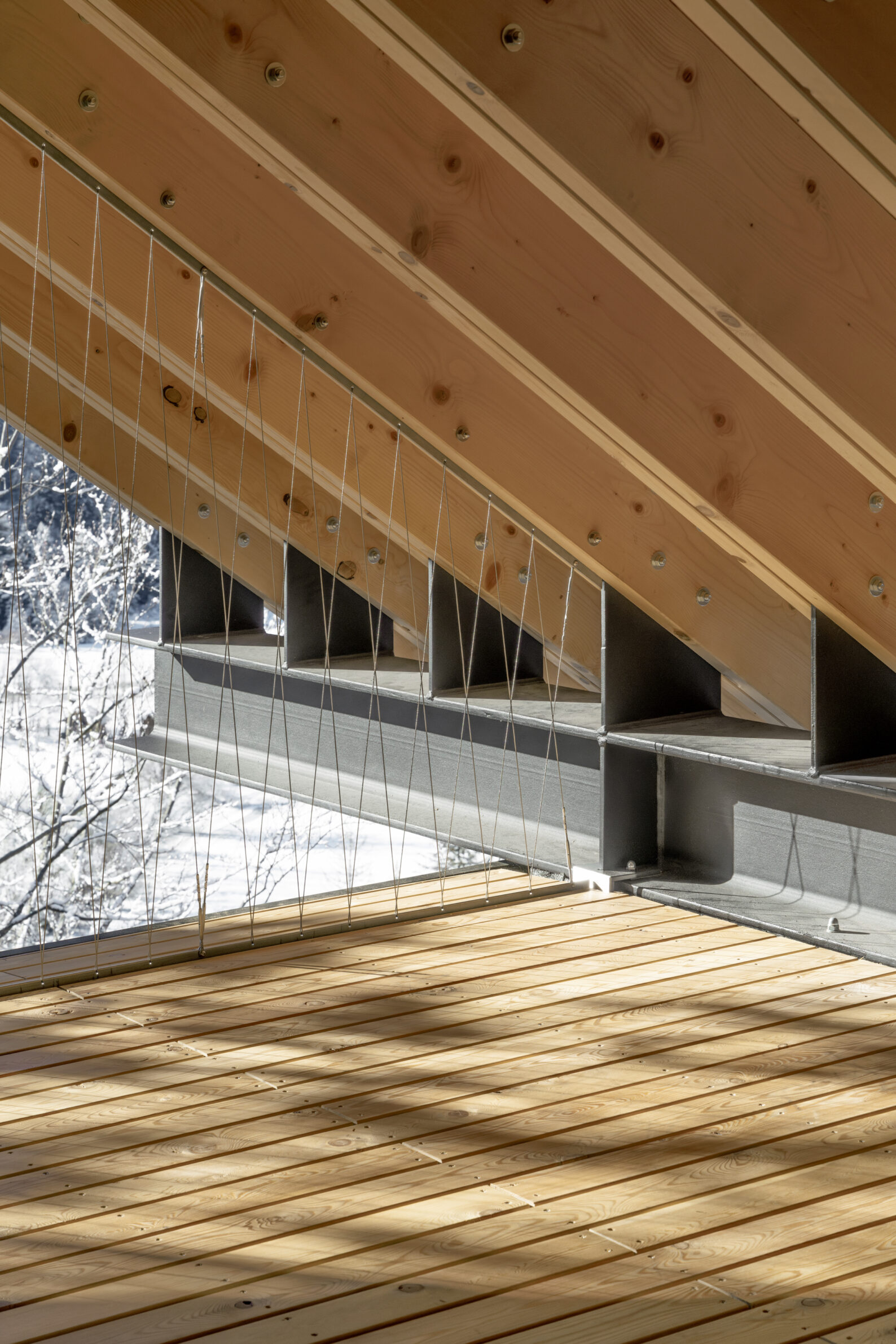
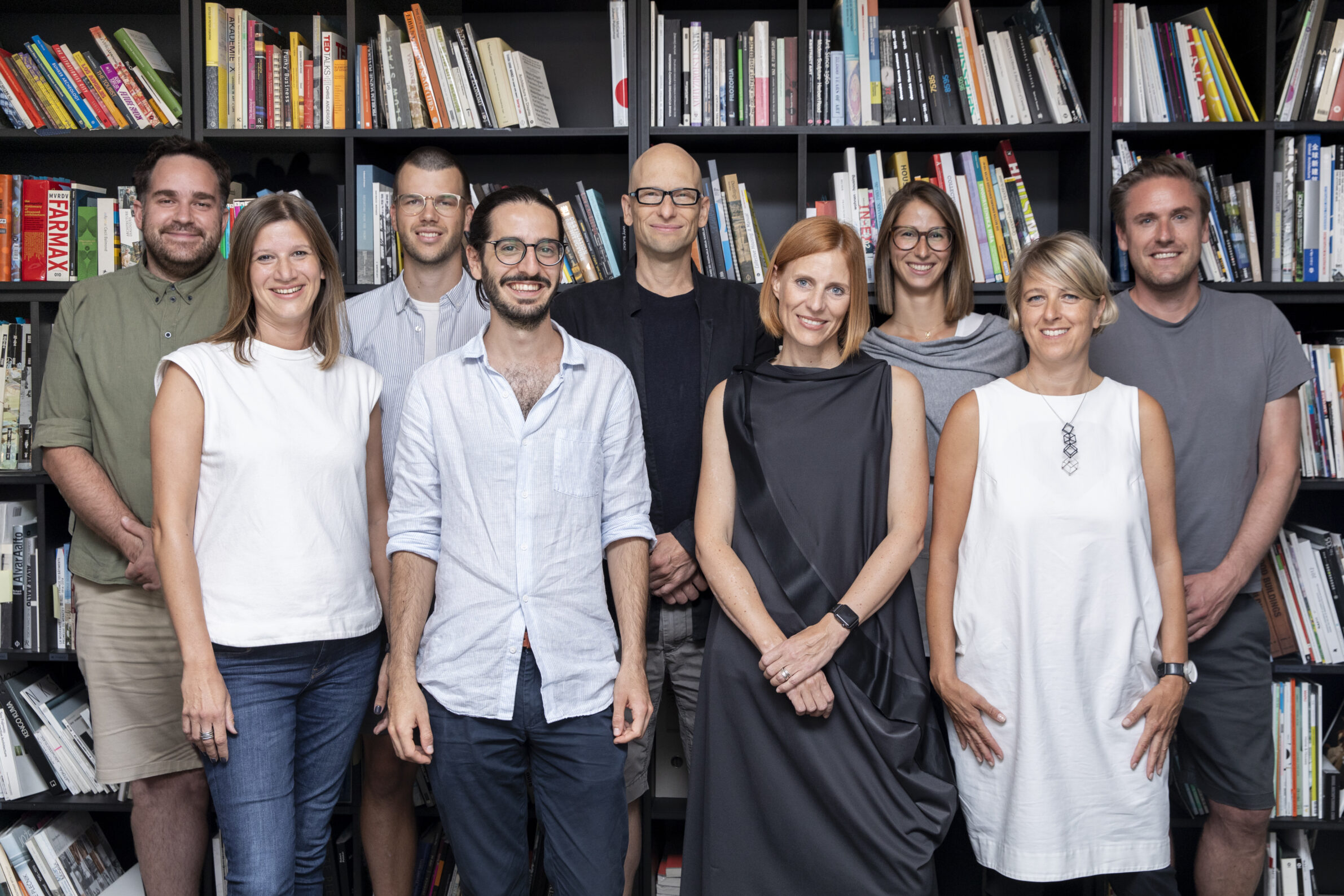
Dekleva Gregoric Architects
Dekleva Gregoric Architects, founded in 2003 by Aljoša Dekleva and Tina Gregoric, is an award-winning international studio redefining Alpine tradition, materiality, and sustainability through projects from experimental houses to cultural institutions across Europe and beyond.
Project
Twin Alpine Houses
Studio:
Dekleva Gregoric Architects
Project Team:
Aljosa Dekleva,
Tina Gregoric,
Jan Zuzek,
Andi Koder
Year of Completion:
2025
Location:
Kranjska gora,
Julian Alps,
Slovenia
Photography:
Ana Skobe
Edited by:
Tanja Završki


